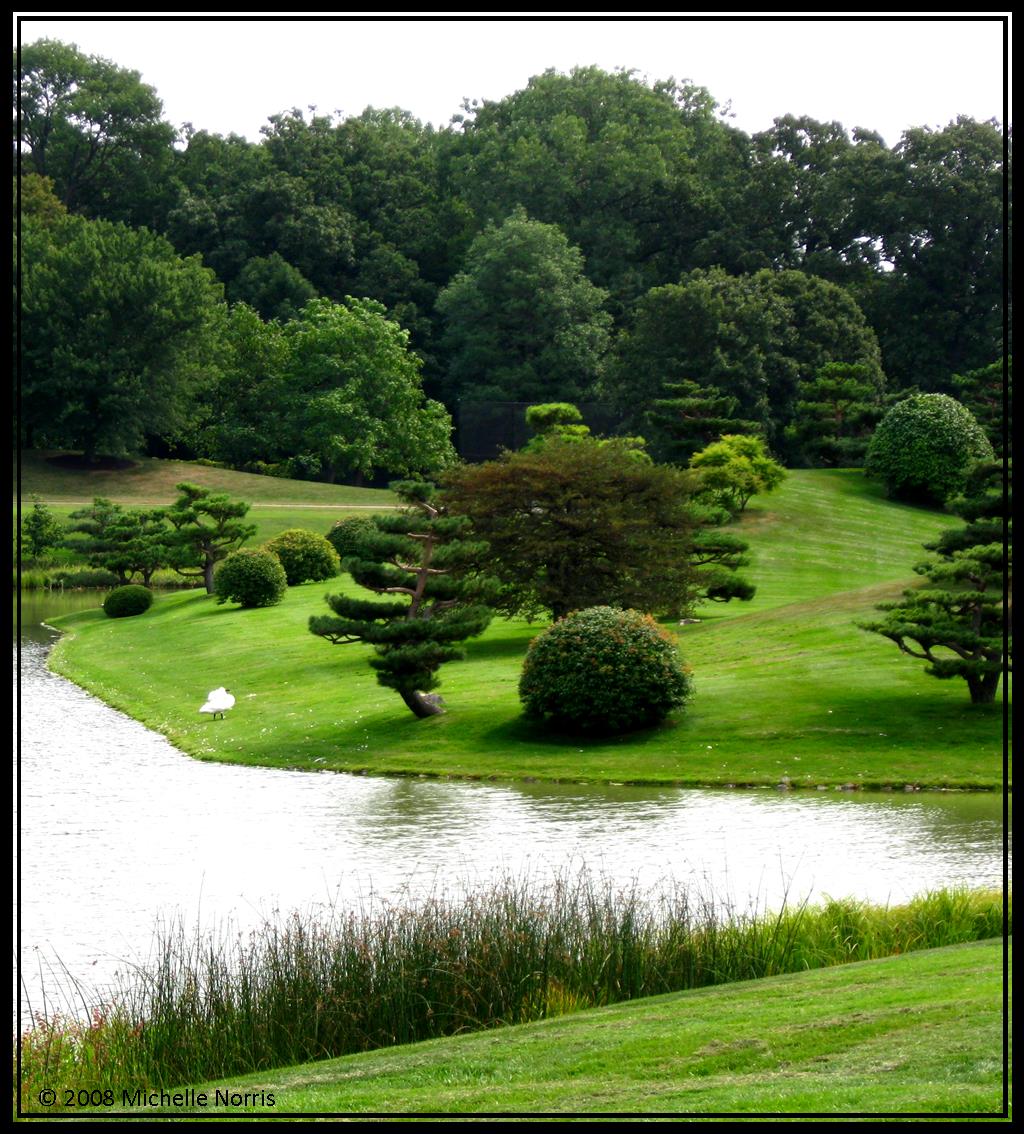
Gardening Styles :: The Japanese Garden
The cascade long ago
ceased to roar,
But we continue to hear
The murmur
of its name.
The Simplicity and Beauty of The Japanese Garden:
A diverse environment harkening to bygone years, the Japanese garden provides a tranquil landscape to garden wanderers. Pristine in keeping through extreme pruning techniques, it offers the avid gardener a challenge in form and design. A 1,000 year old evolutionary process, the garden features numerous styles from the strolling gardens of recreation to the dry stone Zen gardens used for religious purposes.
In its earliest forms, the Japanese garden was featured as a sacred place and commonly marked by pebbles. During the 6th century and the prolific ness of Buddhism, the garden style changed dramatically. Adapted from sacred places to imperial gardens, they became a place for recreation and adopted more Taoist and Buddhist elements such as ponds and streams. Along the centuries, more features have been added to bring us to the present day Japanese garden: arched bridges, lotus flowers, islands and pavilions. From this point, Japanese gardens acquired their varying styles: Zen, Tea, Strolling and Tsubo-niwa.
The Zen garden created a more minimalist and simpler garden while retaining traditional elements like ponds, bridges and islands. Today, some Zen gardens (Karesansui) offer extreme minimalism by using rocks, gravel and sand only.

Tea gardens (Roji), while beautiful in design, are known for their wabi or rustic simplicity. These gardens feature stone pathways, tea houses, lanterns, water basins and other traditional elements. The tea garden makes its visitors oftentimes feel at home.
The strolling garden (Kaiyū-shiki-teien), filled with artificial rolling hills, allows its users to have varying viewpoints. Circular walkways and islands are other features of the promenade garden; in addition, these gardens include many design pieces of the tea garden.

Commonly found in urban areas, the Tsubo-niwa garden is located in courtyards and kept at a small scale. These typically do not feature all the major elements of the larger Japanese gardens and are mainly considered decorative or a way to bring nature inside.

The Japanese Garden: A Delicate Blend of Art and Form:
While the Japanese garden style is a delicate blend of art and form in asymmetrical beauty, there is a presence of constant underlying vegetation. Trees are carefully selected and arranged in the garden depending on their fall colors; flowers are added depending upon their blooming seasons. Some plants are considered for their religious symbolism – the pine for longevity; the lotus for sacred Buddhist principles. Vegetation in the Japanese garden is firmly controlled and shaped by the gardener. Not only does gardening become a fine art in the Japanese garden, but it also takes its cues from nature through miniaturization, manipulation, and minimalism.
The following plants are often found in the Japanese garden:
- Trees: Plum blossom, Yoshino Cherry Blossom, Japanese Maple, Pines, Camellias, Crepe Myrtle, Hibiscus, Junipers, Japanese dogwood, Japanese crab apple, Babylon weeping willow
- Shrubs: Azaleas, Japanese aucuba, Nandina, Japanese quince, Chinese redbud, Gardenia, Japanese holly, Shrub bush clover, Sweet osmanthus
- Flowers: Hydrangeas, Chrysanthemums, Japanese anemone, Tawny Day Lily, Rose-of-Sharon, Japanese iris, Narcissus, Marie’s Balloon flowers
- Climbers and Ferns: Morning Glories, Japanese painted fern, Black bamboo, Oriental clematis, Japanese felt fern, Japanese climbing fern, Boston ivy, Chinese Wisteria
- Grasses and Water lovers: Bishop’s Hat, Dwarf Scouring Rush, Asiatic Lotus, Eulalia grass, Waterlily, Manila grass

0Have you had a chance to visit a Japanese Garden?






